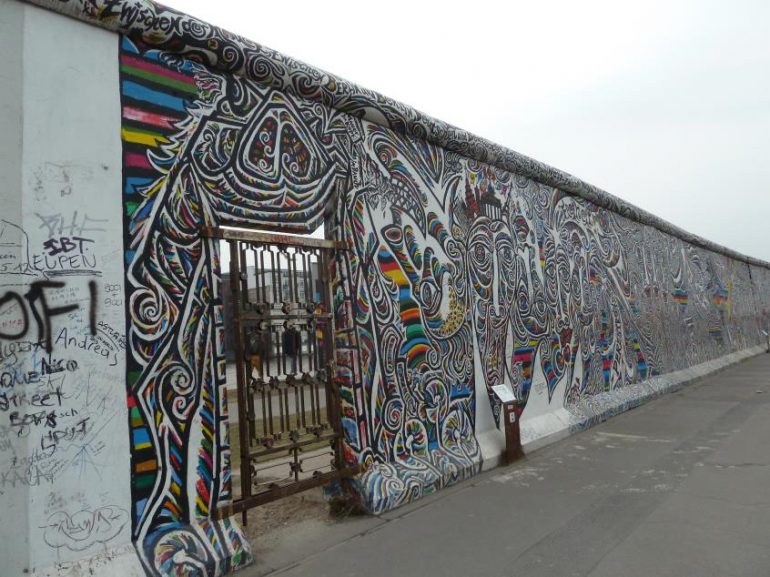They called it the Wall of Shame. And rightly so. Because it symbolized an era, the so-called Cold War era, when people were trembling about who would press the button, causing a nuclear holocaust.
The Berlin Wall, for that reason, divided a capital, a country, a continent, a planet. It was the tangible reference, a historical abomination of concrete blocks and bottomless hatred, of two different worlds. The West and the Soviet-Communist Empire. Two different secular approaches, which gave their existential battle in a fundamentalist field of confrontation, with billions of people being the victims of paranoia.
The Berlin Wall was built on the night of August 12-13, 1961. Its construction reminded everyone of divided Germany, the great loser of the massacre of World War II. On one side of the Wall of Shame is rich and sophisticated West Germany. On the other hand, East Germany, or more properly the German Democratic Republic, on whose initiative the ugliness that cut the world in two was raised.
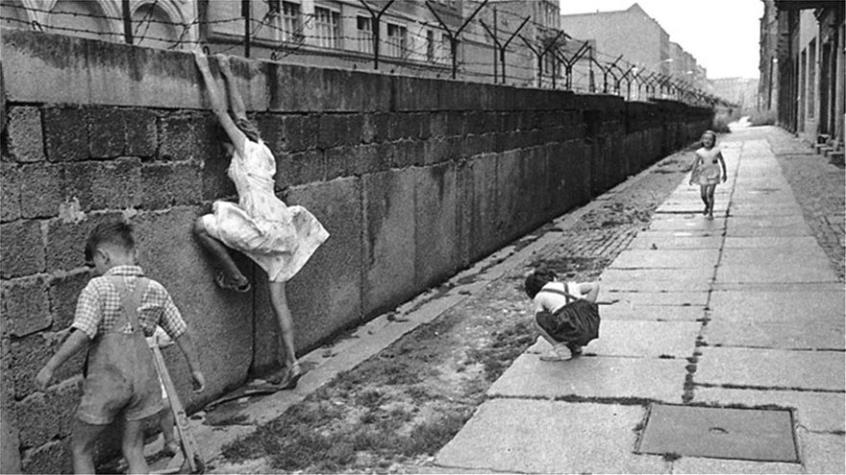
Its aim was to prevent the inhabitants of East Berlin and the rest of East Germany from fleeing, fleeing, or fleeing to West or Federal Germany. It was not long before the Wall of Shame, this insult to European culture, took on new dimensions. Its usefulness in stopping the escape of the East Germans was surpassed and evolved into the symbolism of the closed borders of two worlds.
The construction of the wall
The East German leadership, led by Moscow and the former Soviet Union, was not sparing in the cost of building it, but also in guarding it. The wall was 3,6 meters high and had a patrol corridor, 302 observatories, systems that alerted to any unauthorized movement, barbed wire grids, while the patrols involved more than 14.000 soldiers and 600 dogs, ready to devour any East German. better life.
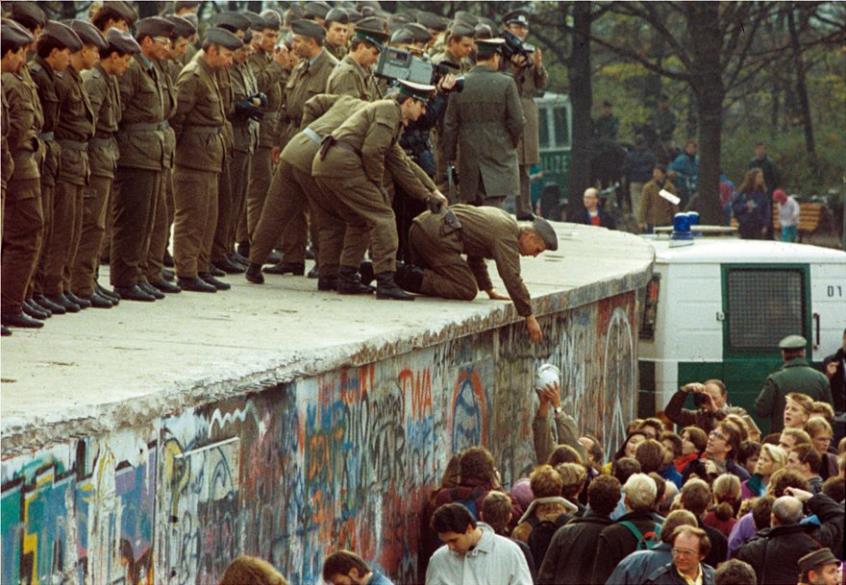
It was the time when the Germans on the east side were the refugees, the (illegal) immigrants, the fugitives, the illegals, the dangerous ones, the terrorists. They were the moving targets, as the soldiers on patrol had an explicit order to shoot anyone who managed to break through the impregnable Wall. In a dramatic reversal of history, the same people, the "fugitives", the "smugglers" of that time and their descendants, the younger generations of Germans, defined politics in the major issue of our day, several decades later, the Refugee . A lesson in social and political history that demonstrates how today's decision affects tomorrow's events, even in the long run.
On November 9, 1989, thousands of Germans, along with countless European citizens, tore down the Wall of Shame. The Wall that divided the world in two. The decline of the former Soviet Union and the presence of a great Russian humanist and visionary, who happened to be in the right place at the right time, had to fall in order for the concrete blocks that hid one world from another to fall. Mikhail Gorbachev linked his name to the "fall" of the Soviet Union and Perestroika. But if we want to see what really happened at that time, we will see that the decline of the Soviet Union marked the exit of the world from a long period of agony of a possible nuclear holocaust and opened the borders of the planet, bringing - at least - one step further. close to two diametrically opposite worlds. Many things changed, new wounds opened, evil was not eliminated, but the Great Catastrophe was averted.
On November 9, 1989, in an emotional -but highly justified- delusion, thousands of people, most of them tortured, oppressed, psychologically raped citizens, tore down the Wall of Shame in Berlin with their own hands and ran into their lives. to the territory of West Berlin, falling into the arms of their own who had managed to escape, to strangers, whoever they saw first in front of them. It was the moments when Europe reunited, when tears of joy covered the crack in its heart, when humanity and civilization won. It was a victory for the people.

Today, a few remnants have remained in the place of the former building, to remind everyone and to show the younger ones that once, a few years ago, the world was different. That for a few years, the world was possessed by a different mentality, by unbridled passions, by wounds that remained open and, as long as they were malformed, were capable of leading to total doom.
9 years have passed since November 1989, 30. On Saturday, Germany, Europe, the whole world, ordinary citizens, celebrate the liberation from the shackles of a dark age for the planet, the Cold War era and the Fall of the building that symbolized it more than anything else. .
The history of the wall
In the summer of 1961 the international community watched anxiously the escalation of hostility between the United States and the Soviet Union over Berlin. Their relationship deteriorated sharply when a Soviet memorandum on the issue of West Berlin was revealed, in which Moscow threatened to conclude a separate peace treaty with the German Democratic Republic and to impede the free movement of Western troops. , if the West did not sign a peace treaty with Germany. Fifteen years after the end of the war, the West was deliberately delaying this issue. The reason for this was that he did not want to formally recognize the existence of East Germany as a separate state.
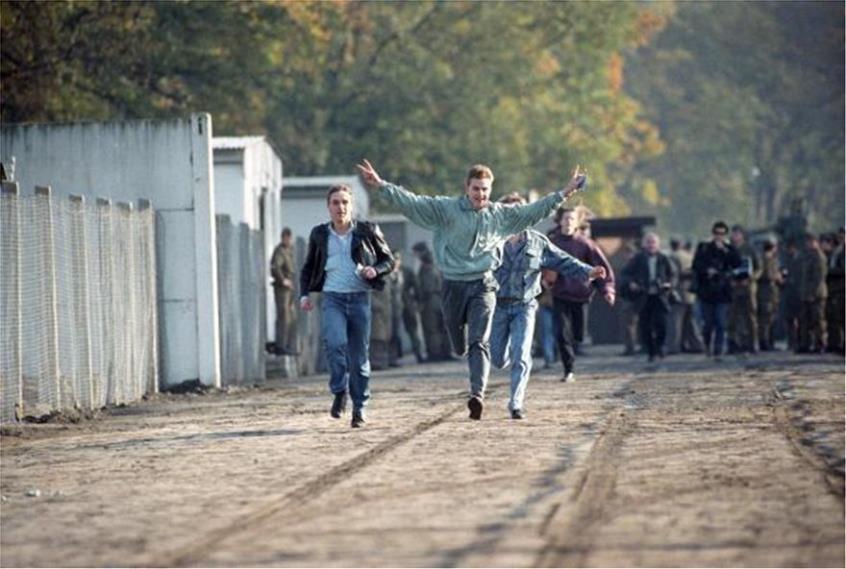
Although tensions were gradually rising in the diplomatic arena, public opinion was taken by surprise when President Kennedy addressed the American people on the radio and television in a dramatic tone on July 25: "West Berlin is more than a link to the free world, it is a link to the free world. a beacon of hope behind the iron curtain, it is a safe haven for refugees ". The next day, the US president asked Congress for authorization to extend his military service by 12 months and the possibility of mobilizing 250.000 reservists combined with an increase in conventional armaments and an immediate increase of military funds by $ 3,5 billion.
The turmoil reached its climax on August 5, when the foreign ministers of the United States, Dean Rusk, France, Couve de Mirville, Lord Hume of Great Britain and, at some point, West Germany, Heinrich von Brennan, met in Paris. line to deal with the West Berlin crisis, either through negotiations or nuclear war.
The Soviet Union reacted violently. Speaking on television and radio two days later, Nikita Khrushchev was "extremely threatening": the allies of the invader and to destroy the American military bases that are scattered all over the world ".
At the same time, feverish consultations were held between the leaders of the countries that were members of the Warsaw Pact, as a result of which, as Pravda revealed on August 14, a message was sent to the government and the Parliament of the German Democratic Republic to restore the border of West Berlin. to be a constant barrier against the subversive activities aimed at the countries of the socialist camp. An order that will ensure effective control and protection around the whole of West Berlin, including its borders with democratic Berlin.
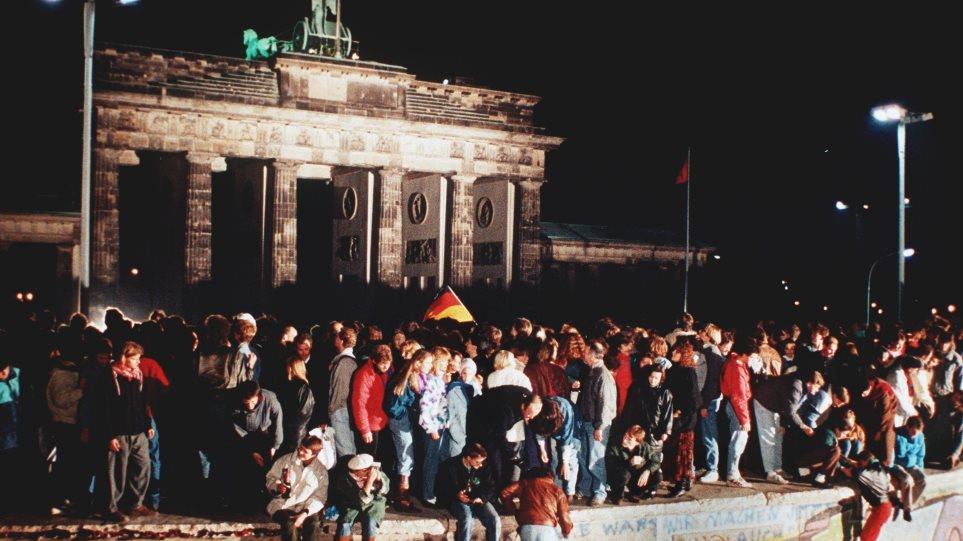
On August 12, the East German cabinet actually adopted a decision to close the border around the western part of Berlin. At dawn on August 13, thousands of men from the East German regime's army and militia divided the two sections of the city, which had hitherto been communicating freely, with barbed wire.
One week later the barbed wire began to be replaced by prefabricated sections of concrete walls. Thus was created the famous Berlin Wall, which for thirty whole years would be the symbol of the failure of a regime. The main reason for its construction was not the protection from external intrusion, but the prevention of mass flight of its inhabitants.
The tension escalated when, on August 31, 1961, the Soviet Union announced that nuclear weapons tests would be repeated so that the weapon of punishment could reach the raider's own nest.
The very next day, an unprecedented series of 16 Soviet nuclear tests began in September, culminating in two terrorist bombings on October 24 and 30, 30 and 50 megatons, respectively, that caused panic in the West. .Π.Α. and NATO did not have nuclear weapons of such magnitude.
The presence of Mikhail Gorbachev
Following the visit of Soviet leader Mikhail Gorbachev to West Germany in 1989, Hungary opened its border with Austria. This allowed the East Germans to flee west. Meanwhile, protests and marches against the government increased, and on November 9, 1989, border restrictions were lifted. Since then most parts of the wall have been dismantled. The most famous piece is 1326 meters long, located along the Muhlenstrasse and is decorated with 106 murals.
The Berlin Wall fell on the night of Thursday 9 to Friday 10 November 1989, after 28 years. Many factors contributed to his downfall. The most important was the policy of the General Secretary of the Communist Party of the Soviet Union Mikhail Gorbachev. In the late 80s, Gorbachev abolished the Brezhnev Doctrine and allowed the Warsaw Pact countries to freely choose their own path in domestic and international politics. Taking advantage of the new line, the Eastern Coalition countries, one after the other, began to open their borders to the West, to overthrow their communist regimes and to elect democratic governments.
Today's remnants
Today, few parts of the Wall remain after most of it has been demolished. Three sections still stand: an 80-meter-long section of the "first Wall" at the site of the Gestapo headquarters (between Charlie's checkpoint and Potsdamer Platz), a longer section of the second wall, along the River Spree, near on the Oberbaumbrücke bridge, now known as the East Side Gallery, and a third section on the Bernauer Straße which became a monument in 1999. There are also some other smaller sections and a few outposts scattered throughout the city of Berlin. All parts of the wall have been damaged mainly by tourists who removed material from the wall to keep it as a souvenir or to sell it. To this day, there are souvenir shops in Berlin that sell small pieces of the wall with or without a certificate of authenticity.
The eastern part of the wall is now covered with graffiti which did not exist when the wall was guarded by armed soldiers of East Germany. In 1990, 118 artists from around the world were invited to decorate parts of the Wall that had not been destroyed. In 2008, and in anticipation of the 20th anniversary of the fall of the Wall a year later, a costly project was launched to restore these murals, involving many of the 118 artists who created the works.
In many tourist spots of the city, the Municipality has placed stone slabs along the route of the Wall and metal inscriptions that read: "Berliner Mauer 1961-1989".
The events from 6 to 9 November
On November 6, 1989, the government unveiled a draft travel law that was far below worldly expectations and eventually sparked even more backlash instead of appeasement. On the same day, 500.000 people demonstrated in Leipzig alone. On the morning of November 9, 1989, a committee of Officers from the Ministries of Interior and State Security met on the orders of the party's Politburo to propose solutions and draw up an emergency arrangement, which would immediately implement the most substantial measures of the draft travel law.
The proposal they submitted to the Politburo was to allow both permanent relocation, which was a problem for refugees in third countries, and short private trips. Otherwise, many who only wanted to visit relatives in West Germany would be forced to emigrate. The committee of officers proposed that the permits be issued for both of the competent services at the request of the interested parties, without formalities. With these proposals it was expected that an unprecedented wave of permanent and temporary exit from the country would be raised, but the pressure would be channeled to the competent services, not to the borders, and could be controlled.
At noon of the same day, the Politburo approved the draft travel arrangements of the committee and put it into circulation in the relevant ministries through the official route for inspections and proposals to be made within the day. According to the usual practice, not expressing objections for a certain time was equivalent to the approval of the plan by the Council of Ministers. The time of 4:00 in the morning of November 10 was set to give the decision to the press.
Until the afternoon, the Ministries of Interior, State Security and Justice are checking the regulation plan. The first two Ministries approve the arrangements for permanent relocation abroad, but object and propose time limits for short private trips. Secretary-General of the Ministry of Justice Siegfried Wittenbeck completely rejects the arrangement on behalf of the absent Minister Hans-Herman Hertle, as he identifies formal and technical problems in the plan submitted to him.
But the government in East Germany was nothing but the executor of the party's decisions and the circulation of bills in the ministries was nothing but a bureaucratic routine. Thus, while the ministries are working on the regulation and finding problems, the plan reaches the Central Committee of the party at 15:00 and ends up in the hands of General Secretary Egon Krenz. Krenz is not aware of the objections of the co-responsible ministries and does not notice that the regulation is intended to be given to the press the next day. Without further ado, he gave a press release to Günter Schabowski, a member of the party's Politburo, who was preparing to give a press conference to East Germans and foreign journalists.
Gorbachev at the BBC: No bloodshed
In an interview with the BBC on the occasion of the 30th anniversary of the Fall of the Wall, Mikhail Gorbachev referred to the events of that shocking, historic night in which East Germans took to the streets to cross to the western part of the Wall and his anxiety about not bloodshed. "There should be no bloodshed," he says. "We could not allow this to happen in a matter of such importance for Germany, for us, for Europe, for the whole world. That is why we stated that we would not interfere. "
Thirty years after that historic day, Gorbachev is worried. He believes that the current tensions between Russia and the West pose a colossal threat to world peace. Asked by a British journalist how dangerous the confrontation between his country and the Western world is, he replied: "As long as there are weapons of mass destruction, primarily nuclear weapons, the danger is colossal. All countries must declare that these weapons must be destroyed. For the salvation of ourselves and our planet ".
Thirty years later…
The Berlin Wall fell. The symbolism of the divided world became rubble of stones, bricks and earth. But were the world really liberated? Did he escape the shackles of the two rival camps? Mikhail Gorbachev, the man who allowed the first step to take place, expresses serious objections.
And rightly so. Three decades later, Russia's relations with the United States, the two superpowers, are at their worst, prompting internationalists to talk about a new Cold War era. The wars of interest that have taken place since then prove that the Russian leader rightly expresses his objections.
What is happening today? The world is split in two again. As if he had not learned the slightest thing from history. The two major powers have formed alliances, with Moscow on the side of the new superpower, China and Iran, while a "big game" is being played with NATO's third military force, Turkey.
The war in Syria, the interests in Iran, the global balances, the war and the break-up of the former Yugoslavia, in the heart of Europe, mark an era that could indeed be described as a New Cold War Period.
The events in Berlin for the big anniversary have begun. Events, updates, documents of the time, all to remind the darkness that the world lived. Some pictures from the events of the last days, in view of the climax of Saturday, you can see in the video below:
Thirtieth anniversary of the fall of the wall
Saturday in Berlin will celebrate a very big, historic moment of humanity. A moment of humanity, culture, greatness, beauty. The messages of the leaders will fluctuate at a similar pace. But it is not enough. Those who decide, first and foremost, must learn from history and listen to the message of today. Of the world that daily breaks down the Walls of racism, of divisions, of opposites.
And through the internet, from access to easy communication, this world demands a world united, without rivalry and enemies, a world where the few - in size and value - voices of those who want a world trapped in hatred, in racism, in segregation, in fascism of all forms, to be stifled in their infancy.
On November 9, 2019, people will celebrate the 30th anniversary of the Fall of the Wall of Shame in Berlin. The greatest gift would be for all peoples to join hands and agree that no interest, no policy, will divide the world in two.
Source: First Topic
